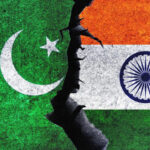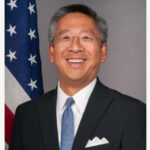How important is this summit for the world and for India specifically? Which countries are not attending the gathering? Why and how was the G-20 formed? What does its current make-up say about the economic balance of the world? When is India taking up the G-20 presidency?
The story so far: On Tuesday, leaders of the G-20 nations will gather at Bali’s Nusa Dua resort for the 17th summit of the world’s most advanced economies. G-20 countries represent 85% of the global GDP, 75% of global trade and 66% of the world population. While the focus will be on post-pandemic recovery and dealing with energy and food security impacted by the Russian war in Ukraine, much interest will be around which leaders choose to hold bilateral summits on the sidelines. Notable by his absence is Russian President Vladimir Putin, who had earlier accepted Indonesian host President Joko Widodo’s invitation, but as the war with Ukraine continues, has sent his Foreign Minister Sergey Lavrov to represent Russia.
What is the agenda of this summit?
The motto for this G-20 is Recover Together, Recover Stronger. President Jokowi has made recovering from the pandemic a major focus despite geopolitical tensions overshadowing the summit. The leaders will engage in discussions over three sessions: on Food and Energy security, Health Partnership for Global Infrastructure and Investment, and Digital Transformation. In addition, to highlight the concerns over climate change issues, Mr. Jokowi will lead his guests to the Indonesian mangroves of Taman Hutan Raya, which have been restored over a 30-year project covering nearly 700 acres. Prime Minister Narendra Modi is also set to spell out his agenda for the year ahead under India’s G-20 presidency, with special focus on the Global South and the problems it is facing due to geopolitical tensions, food and fuel shortages.
What makes this G-20 different from others?
For the world, this is the first G-20 since Russia began the war in Ukraine and the west imposed sanctions on Russia. Efforts will be made to build global consensus over issues that have clearly divided the world. For India, the importance of the summit of the world’s most advanced economies is that it is India’s turn to host the summit next. Mr. Modi will receive a handover from the Indonesian President Joko Widodo after which India will assume the presidency on December 1. Additionally, this is only the second time Chinese President Xi Jinping has travelled abroad since the COVID pandemic, and the first time since he was re-elected at China’s Party Congress last month.
Who all are attending and who is not?
The summit in Bali will be attended by leaders of Argentina, Australia, Canada, China, the European Union, France, Germany, Italy, Japan, Saudi Arabia, South Africa, South Korea, Turkey, the U.K. and the U.S. Spain is a permanent invitee, and the special invitees this year also include leaders of Cambodia, Fiji, the Netherlands, Rwanda, Senegal, Singapore, Suriname and UAE. In addition, heads of several international agencies like the UN, the IMF, ASEAN, the African Union will attend the 2022 G-20. The Indonesian President has also invited the Ukrainian President to address the summit virtually, while Russian President Putin, and leaders of Mexico and Brazil (which is in a leadership transition), will not attend the summit.
What do we know about the bilateral meetings?
All eyes will also be on the bilateral summits happening by the sidelines — including the Biden-Xi summit, held on Monday at a time when U.S.-China tensions are at a high. While neither Delhi nor Beijing have confirmed a Modi-Xi meeting, any interaction between the two leaders will be the first since the military stand-off at the Line of Actual Control which began in April 2020. Mr. Modi is expected to meet many of the G-20 leaders and others, and will invite them to next year’s summit in India.
Among the leaders who are attending for the first time as heads of their countries are U.K. PM Rishi Sunak, Italian P.M. Georgia Meloni, Australian P.M. Anthony Albanese, UAE President Mohammad Bin Zayed Al Nahyan (MbZ), Saudi P.M. and Crown Prince Mohammad bin Salman (MbS).
Why was the G-20 created?
Created in 1999 as an acceptable medium between the more “elitist” G-7 (then the G-8), and the more unwieldy 38-member Organisation for Economic Co-operation and Development (OECD), the G-20 was conceived in a more unified, post-Soviet era, when western economies made the rules, China was just on the rise and Russia was still recovering from its breakup. Over the past two decades, the global economic balance has shifted, and the G-20 has been seen as a more representative and egalitarian grouping of global leadership, and was particularly useful in steering the global economy after the global financing crisis and banking collapse of 2008. Significantly, next year the “Troika” of G-20 will be made up of emerging economies for the first time with India, Indonesia and Brazil — an indicator of the shift in the global economic agenda towards the Global South.
The significance of the Bali G-20 summit
How important is this summit for the world and for India specifically? Which countries are not attending the gathering? Why and how was the G-20 formed? What does its current make-up say about the economic balance of the world? When is India taking up the G-20 presidency?
The story so far: On Tuesday, leaders of the G-20 nations will gather at Bali’s Nusa Dua resort for the 17th summit of the world’s most advanced economies. G-20 countries represent 85% of the global GDP, 75% of global trade and 66% of the world population. While the focus will be on post-pandemic recovery and dealing with energy and food security impacted by the Russian war in Ukraine, much interest will be around which leaders choose to hold bilateral summits on the sidelines. Notable by his absence is Russian President Vladimir Putin, who had earlier accepted Indonesian host President Joko Widodo’s invitation, but as the war with Ukraine continues, has sent his Foreign Minister Sergey Lavrov to represent Russia.
What is the agenda of this summit?
The motto for this G-20 is Recover Together, Recover Stronger. President Jokowi has made recovering from the pandemic a major focus despite geopolitical tensions overshadowing the summit. The leaders will engage in discussions over three sessions: on Food and Energy security, Health Partnership for Global Infrastructure and Investment, and Digital Transformation. In addition, to highlight the concerns over climate change issues, Mr. Jokowi will lead his guests to the Indonesian mangroves of Taman Hutan Raya, which have been restored over a 30-year project covering nearly 700 acres. Prime Minister Narendra Modi is also set to spell out his agenda for the year ahead under India’s G-20 presidency, with special focus on the Global South and the problems it is facing due to geopolitical tensions, food and fuel shortages.
What makes this G-20 different from others?
For the world, this is the first G-20 since Russia began the war in Ukraine and the west imposed sanctions on Russia. Efforts will be made to build global consensus over issues that have clearly divided the world. For India, the importance of the summit of the world’s most advanced economies is that it is India’s turn to host the summit next. Mr. Modi will receive a handover from the Indonesian President Joko Widodo after which India will assume the presidency on December 1. Additionally, this is only the second time Chinese President Xi Jinping has travelled abroad since the COVID pandemic, and the first time since he was re-elected at China’s Party Congress last month.
Who all are attending and who is not?
The summit in Bali will be attended by leaders of Argentina, Australia, Canada, China, the European Union, France, Germany, Italy, Japan, Saudi Arabia, South Africa, South Korea, Turkey, the U.K. and the U.S. Spain is a permanent invitee, and the special invitees this year also include leaders of Cambodia, Fiji, the Netherlands, Rwanda, Senegal, Singapore, Suriname and UAE. In addition, heads of several international agencies like the UN, the IMF, ASEAN, the African Union will attend the 2022 G-20. The Indonesian President has also invited the Ukrainian President to address the summit virtually, while Russian President Putin, and leaders of Mexico and Brazil (which is in a leadership transition), will not attend the summit.
What do we know about the bilateral meetings?
All eyes will also be on the bilateral summits happening by the sidelines — including the Biden-Xi summit, held on Monday at a time when U.S.-China tensions are at a high. While neither Delhi nor Beijing have confirmed a Modi-Xi meeting, any interaction between the two leaders will be the first since the military stand-off at the Line of Actual Control which began in April 2020. Mr. Modi is expected to meet many of the G-20 leaders and others, and will invite them to next year’s summit in India.
Among the leaders who are attending for the first time as heads of their countries are U.K. PM Rishi Sunak, Italian P.M. Georgia Meloni, Australian P.M. Anthony Albanese, UAE President Mohammad Bin Zayed Al Nahyan (MbZ), Saudi P.M. and Crown Prince Mohammad bin Salman (MbS).
Why was the G-20 created?
Created in 1999 as an acceptable medium between the more “elitist” G-7 (then the G-8), and the more unwieldy 38-member Organisation for Economic Co-operation and Development (OECD), the G-20 was conceived in a more unified, post-Soviet era, when western economies made the rules, China was just on the rise and Russia was still recovering from its breakup. Over the past two decades, the global economic balance has shifted, and the G-20 has been seen as a more representative and egalitarian grouping of global leadership, and was particularly useful in steering the global economy after the global financing crisis and banking collapse of 2008. Significantly, next year the “Troika” of G-20 will be made up of emerging economies for the first time with India, Indonesia and Brazil — an indicator of the shift in the global economic agenda towards the Global South.






NO COMMENT